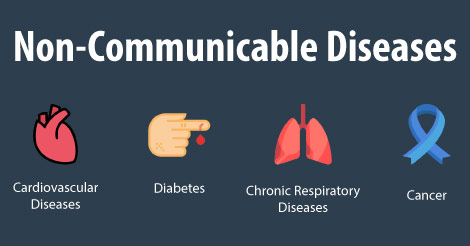Noncommunicable diseases (NCDs), also known as chronic
diseases, tend to be of long duration and are the result of a combination of
genetic, physiological, environmental and behaviors factors.
What are the risk factors of NCDs ?
Why have these diseases increased?
- Population aging= is an increasing median age in the population of a region due to declining fertility rates and/or rising life expectancy.
- Urbanization= refers to the population shift from rural areas to urban areas,
- Globalisazation = is the
process of interaction and integration among people, companies, and governments
worldwide.
- Changes in life style.
What do we need to do to avoid such diseases?
- Wholesome food should become more
available and less expensive.
- Parks and recreation areas should
become safe and properly equipped.
- Advertising philosophy regarding
drinking / smoking should be limited.
- Laws and regulations are needed.
- Processed foods should become reformulated so as to make them healthy.
- Informing consumers about the nutrition content of packaged foods.
- Regulating sales of junk food at school
/ provide free fresh water.
- Increase taxes on tobacco, alcohol,
sugar sweetened beverages.
- Facilitate access to “quit-smoking” programs.
- Ban tobacco uses in enclosed public
spaces.
- Access to diagnosis and treatment in public health
sector.
Vocabulary:
median age = μέση ηλικία
declining fertility = μείωση γονιμότητας
life expectancy = προσδόκιμο ζωής
integration = ενσωμάτωση
Wholesome food = υγιεινό φαγητό
Parks and recreation areas = πάρκα και περιοχές αναψυχής
Regulations = κανονισμοί
Reformulated = αναμορφώθηκε
Packaged foods = συσκευασμένα τρόφιμα
Beverages = ποτά
Facilitate = διευκολύνω
Ban = απαγόρευση
Public health sector = τομέας δημόσιας υγείας
The effects of the epidemic of NCDs -Dr. Kent L. Thornburg :


